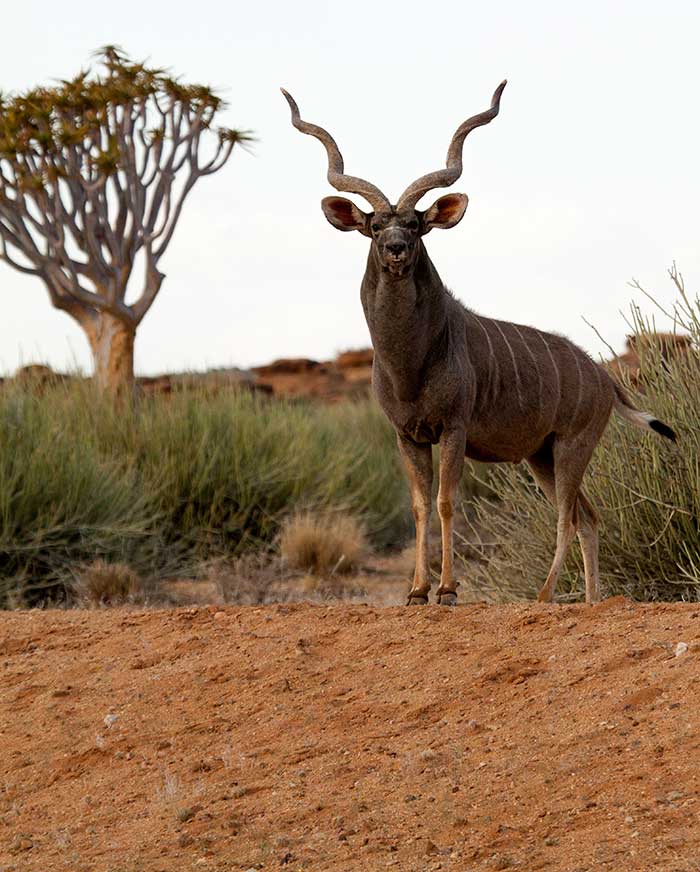Kudu - tragelaphus strepsiceros
Kudu are a large handsome antelope with grey brown to rufous in colour. Their sides clearly marked with 6 to 10 vertical white stripes – large rounded ears – bushy tail – long spiral horns of the male – distinct white band across the face – white spots on cheeks
Large populations can still be found in the Luangwa Valley (Zambia as well as Moremi. Chobe, Mana Pools and Hwange National Park

Characteristics
Mainly diurnal – most active in the mornings and late afternoons.
Run with their heads level to the ground with the horns laid back to avoid being entangled in branches.
Despite their impressive weight they can easily clear 2 meters when jumping.
Their acute hearing is accentuated by an ability to turn their large rounded ears in almost any direction
Kudu are ruminants (they chew the cud) and have a specially adapted stomach divided into 4 sections which emable themto digest plants.
Enzymes necessary to break down the vegetable matter are provided by micro organisms which live in the large stomach.
Defense Strategies
their warning cry is a harsh bark – predators include leopard, cheetah and lion.
Feeding
Predominantly browsers – will eat grass under exceptional circumstances

Description
Mass – 250kg (male) 180kg (female)
Horn Length – 160cm (average)
Shoulder Height – 150cm (male) 135cm (female)
Breeding
Most births occur during summer months (the main rutting period being mid-winter) – a single calf born after a gestation period of around 210 days.
Herd Strength
Small family groups – generally not more than 12 consisting of females and calves. Males join the group only for mating purposes.
Life Expectancy
14 years

